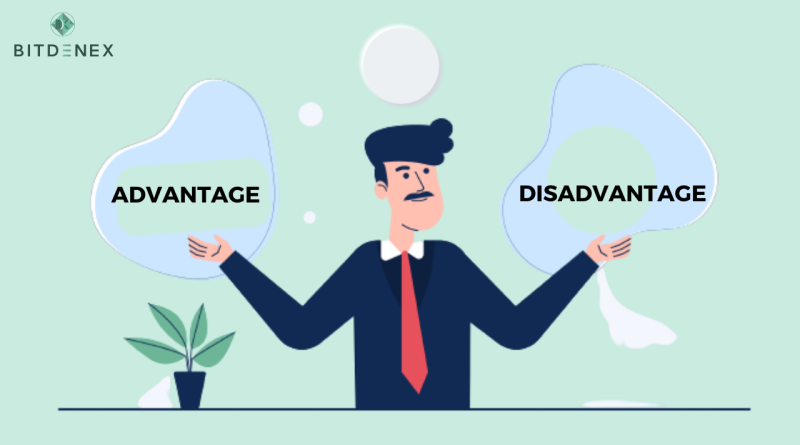Blockchain Advantages and Disadvantages
Blockchain Advantages and Disadvantages
Most blockchains are built as a decentralized database with a distributed digital ledger.
These blockchain ledgers record and store data in blocks that are organized chronologically and linked by cryptographic proofs. The development of blockchain technology provided numerous benefits in a variety of industries, including increased security in trustless environments. However, its decentralized nature has some drawbacks. Blockchains, for example, have limited efficiency and require more storage capacity when compared to traditional centralized databases.
Advantages
Distributed
Blockchains are extremely resilient to technical failures and malicious attacks due to the fact that data is stored in thousands of devices across a distributed network of nodes. Because each network node can replicate and keep a copy of the database, there is no single point of failure: a single node going offline has no effect on the network’s availability or security.
On the other hand, many traditional databases rely on a single or a few servers and are thus more vulnerable to technical failures and cyber-attacks.
Stability
Confirmed blocks are extremely unlikely to be reversed, which means that once data is registered in the blockchain, it is extremely difficult to remove or change it. Blockchain is an excellent technology for storing financial records or any other data that needs an audit trail since every change is tracked and permanently recorded on a distributed ledger.
For example, a company could use blockchain technology to prevent its employees from engaging in fraudulent behavior. In this case, the blockchain could provide a secure and consistent record of all financial transactions that occur within the company. This makes it much more difficult for an employee to conceal suspicious transactions.
Trustless system
Most traditional payment systems rely on an intermediary – such as a bank, credit card company, or payment provider – in addition to the two parties involved. This is no longer necessary when using blockchain technology because the distributed network of nodes verifies the transactions through a process known as mining.
As a result, Blockchain is frequently referred to as a ‘trustless’ system. As a result, a blockchain system eliminates the risk of relying on a single organization while also lowering overall costs and transaction fees by eliminating intermediaries and third parties.
Disadvantages
Attacks by 51%
The Proof of Work consensus algorithm that protects the Bitcoin blockchain has proven to be very efficient. However, there are a few potential attacks that can be carried out against blockchain networks, and 51% of these attacks are among the most widely discussed. Such an attack is possible if one entity gains control of more than 50% of the network hashing power, allowing them to disrupt the network by intentionally excluding or modifying transaction ordering.
Data modification
Blockchain systems also have the disadvantage of being extremely difficult to modify once data has been added to them. The stability of blockchain is one of its advantages, but it is not always a good thing. A hard fork occurs when a chain is abandoned and a new one is taken up when blockchain data or code needs to be changed.
Private keys
Blockchain employs public-key (or asymmetric) cryptography to ensure that users retain ownership of their crypto units (or any other blockchain data).
Each blockchain address corresponds to a private key. The address can be shared, but the private key should be kept private. Users must use their private key to access their funds, effectively acting as their own bank. If a user misplaces their private key, the money is effectively lost, with no recourse.
Inefficient
Blockchains, especially those based on Proof of Work, are highly inefficient. Mining is highly competitive, and there is only one winner every ten minutes, so all other miners’ efforts are wasted. As miners are continuously trying to increase their computational power, so they have a greater chance of finding a valid block hash, the resources used by the Bitcoin network have increased significantly in the last few years, and it now consumes more energy than many countries, such as Denmark, Ireland, and Nigeria.
Storage
As blockchain ledgers grow over time, they can become very large. Bitcoin requires approximately 200 GB of storage at present. Blockchain size is outpacing hard drive growth, and the network is at risk of losing nodes if the ledger becomes too large for individuals to download and store.
Use this link to sign up and start trading with 0.20% trading fees at Bitdenex Exchange.

